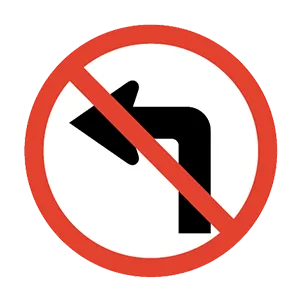FREE Kansas DMV Practice Test #17 Page 3 of 3
In Kansas, the DMV practise tests have been revised for January 2025. It includes questions based on the Kansas Driver Handbook's most essential traffic signals and regulations for 2025. Use actual questions that are very similar (often identical!) to the DMV driving permit test and driver's licence exam to study for the DMV driving permit test and driver's licence exam.
On the practise exam, each question gets a tip and explanation to help you remember the concepts. The written component of the official Kansas DMV test will include questions about traffic rules, traffic signs, and driving statutes, as well as information from the Driver Handbook.
To obtain a passing grade, you must correctly answer 20 of the 25 questions. Take our DMV practise exam to help you prepare for your Kansas instruction permit or driver's licence.
The DMV exam is available in several languages.
Using any kind of testing assistance will result in an automatic fail, and the DMV may take additional action against your driver's licence, so stay away from it.
17 . Stopping distances and the severity of collisions:
Excessive vehicle speed can have disastrous effects. As a vehicle's speed increases, the potential impact of a collision also increases, elevating the possibility of serious injury and death. Increase your following distance as your speed increases to ensure that you will be able to stop safely if needed.
18 . If your vehicle has a mechanical problem:
If your vehicle breaks down on a highway, make sure other drivers can see it. Get your vehicle off the road and away from traffic if at all possible and turn on your emergency flashers to show that you are having trouble.
19 . You want to turn left at an upcoming corner. Yield the right-of-way to:
When making a left turn, you must yield to pedestrians, bicyclists, or other vehicles moving on their green light.
20 . This yellow warning sign means:

This sign is placed on roads near schools to warn drivers to slow down, drive with caution, and watch for children.
22 . There is no crosswalk and you see a pedestrian crossing your lane ahead. You should:
At an intersection where traffic is not controlled by traffic signal lights, drivers are required to yield the right-of-way to pedestrians within any crosswalk, marked or unmarked. Even if there is no crosswalk, yield to the pedestrian.
23 . As you approach the top of a hill, you should:
You may not know what is on the other side of a hill or just around a curve, even if you have driven the road many times. If a vehicle is stalled just out of sight on the roadway, you must be able to stop. Whenever you come to a hill or curve, adjust your speed so you can stop if necessary.
24 . "No zones" are areas around trucks where cars:
"No zones" are areas around trucks or buses in which cars disappear into the larger vehicle's blind spots. "No zones" can also be defined as areas in which cars are so close to the larger vehicle that they restrict the truck or bus driver’s ability to stop and maneuver safely. A car being in a "No zone" greatly increases the potential for a crash.
25 . This sign means:

This sign means drivers cannot make a left turn. It is unsafe and unlawful to make a left turn at an intersection where this sign is posted.
Need Car Insurance? No problem!
Compare the best rates in Kansas and find a personalized policy that meets your needs.
1. Are You Currently insured ?
2. Married ?
3. Do you own your Home?
4. Do you have more than 1 car ?
5. Have you or a Family Member Honorably Served in U.S. Military ?
6. Your Name
7. Age
8. Zip code
IMPORTANT REMINDER:Auto Insurance is Mandatory to drive in Kansas. Get covered before you hit the road to avoid any fines.
Ranked by best match




